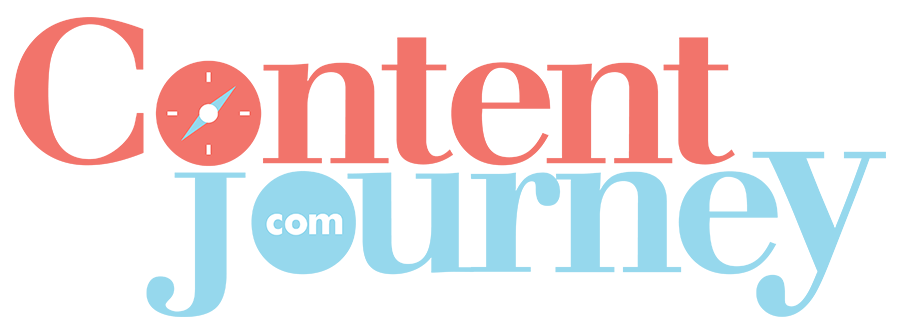Understanding Your Digital Marketing Target Audience
Have you had a tough time selling your product or finding leads? Maybe you’ve got stellar content and a strong marketing strategy, but you still feel lost in the wild west of digital marketing. You’ve got a consistent post schedule and think you’re putting your budget to good use, but you’re just not getting the traffic and conversions you need. If this sounds like you, you might be focusing on the wrong audience.
Marketing isn’t a one-size-fits-all plan. Don’t focus your time promoting to the wrong people. You need to understand your digital marketing target audience to get the most out of your marketing dollars.
At Content Journey, we help our clients identify their digital marketing target audience, resulting in millions of dollars in sales each year.
In this post, I’ll teach you how to:
- Define and research marketing target audience
- Create personas to represent your target audience
- Focus your content on the right people
Defining Your Target Audience
Your target audience is the group of people most likely to buy your product or use your service. Knowing your target audience helps determine where to focus your energy in promoting your business. Who has the problems your service will fix? Who has the means to buy your product? And therefore, who should your digital marketing speak to?
Assuming you’re attempting to attract more people like your current customers, look at your existing audience to determine these factors. You can use Google Analytics or insights through social media to get the intel.
Demographics
You can learn a lot about your audience through some basic information about them that’s easy to get from your analytics tools.
These factors can include:
- Age
- Gender
- Location
- Race
- Employment
- Income level
- Education level
Psychographics
While some factors of your target audience are based on more logistic data, more abstract factors can help you really understand them.
These factors can include:
- Interests and hobbies
- Lifestyle and values
- Personality traits
- How they make purchasing decisions
Online Behavior
Where is your target audience most likely to see your messages? How will they bump into your marketing? Once you know the “Who?” you also have to know the “Where?”
These factors can include:
- Search habits
- Browsing habits
- Social media usage
- Device preferences
You can’t know too much about your target audience. The more information you have, the better prepared you are to speak directly to them. Gathering this data helps your company reach the right people who can benefit from your services or products. It’s the secret to selling or generating more leads.

Conducting Market Research
To sell more products, you don’t just need to know who you’re selling to but how they buy. What influences their purchasing decisions? How do they find you?
As the market evolves, so does your customers’ avenue for buying. As a marketer, stay in tune with the industry and what your competitors are doing. What trends are other businesses following? It’s about uncovering the “why” behind the data. Market research lets you discover who your customers are and what they want from you.
Competitive Analysis
Every business wants to be the best and the brightest. You need to stay aware of who your competitors are and how they conduct their business. You might just learn a few key points to their success.
Analyze your competitors’ target audience strategies. You may not be appealing to your target audience while your competitor is succeeding. How are they capturing their share of the market? How are they connecting with customers?
A competitive analysis helps identify your business’s strengths and weaknesses. By having a documented analysis of where competitors are outperforming your business, you can identify if you need to improve your product or service to outsell the competition.
To perform such an analysis, consider using this competitive analysis kit from HubSpot. It guides you through the process and includes downloadable templates.
Customer Surveys
Another successful method for understanding your marketing is talking to your current customers. Design effective surveys to find out what they like about your business and marketing and where you can improve.
Sample questions include:
- What is the problem you are experiencing with this product/service?
- What do you want out of this product/service?
- How could this product/service be improved?
- Why did you choose our business?
- Where do you learn about this product/service?
- How do you prefer to get information about this product/service?
From this survey data, you can extract insights that will inform how you should market your product or service. You can contact your customers through emails you’ve collected for email marketing and/or create a short popup survey on your website.
When to Conduct Market Research
Be strategic in conducting your market research, so you get the information you need without allocating too much time or other resources.
You should consider conducting market research:
- Before Launching a New Business. You need to know what you’re getting into. What already exists out there? How are they pricing? How are others marketing their business?
- Before Entering a New Market. Found new potential customers? Time to learn the ins and outs of their buying patterns so you know what to expect from them.
- Before Developing a New Product. Does your target audience need this product? How can you expect it to perform? It’s worth it to invest in the research ahead of time so you don’t end up wasting money on a product or service that won’t sell.
- After a New Venture. Determine how your new business or product is performing by analyzing the data. What did you get wrong? Where can you improve? Your business will always have strengths and weaknesses, so this is your opportunity to hone in on areas of improvement.
- When You Aren’t Hitting the Mark. If your marketing isn’t getting the results you intended, you should do some research to determine why. You might just be talking to or focused on the wrong people.
Continue to stay up-to-date with the trends and changes in the market. Being an informed business owner helps you stay competitive in your industry.
Creating Buyer Personas
A proven method for understanding your target audience is creating buyer personas. Your customers are more than just numbers and demographic categories. They’re real people with interests and values. A buyer persona helps you communicate authentically and speak to a customer’s specific needs.
What Are Buyer Personas?
A buyer persona is a truth-based story about an imaginary person based on your market and audience research. The persona embodies your target audience. The more well-rounded and fleshed out, the better. This character will help you cater your product or service to the needs of real buyers because you’ll gear your marketing to this fictitious person who represents the real people you’re targeting.
Benefits of using buyer personas include:
- Provide insights for leads
- Increase customer retention
- Influence product advancement
- Inspire relevant content creation
- Lead to high-value customers
How to Develop Buyer Personas
Just like a real customer, a buyer persona should have interests, values, desires, pain points, and behavior trends. It should reflect your ideal customer. Understanding the demographics and behaviors of your buyer personas helps you develop a comprehensive profile.
Traits to identify include:
- Demographics. Age, sex, location, race, family status, education level
- Professional status. Job title, income, level of seniority, industry
- Psychographics. Values, political views, belief systems, religious views, lifestyle
- Influences. Preferred social media, favorite websites, influential people, preferred entertainment
Pain points to identify include:
- Frustrations
- Obstacles
- Inconveniences
- Inconsistencies
- Dissatisfactions
After gathering the data, analyze your insights to create a fictional profile of your buyer persona.
We did a version of this here at Content Journey to determine our average blog reader (more of a reader persona) and what they were looking for/getting from our blog. We put a real person on it (Hi, Nicole) because one of our freelance writers just happened to perfectly represent one of our reader personas. Then we began writing blog posts focused on her. Our personas have since changed, but it’s still a worthwhile example.
Perhaps not surprisingly, HubSpot also offers buyer persona templates and a guide for creating these important assets.
You’ll be amazed by how much more effective your marketing efforts will be when you fully grasp who you’re communicating to. But don’t forget that you need to know more than just data. You need to really understand your market. Otherwise, you may miss the mark.
Source: Unknown
Segmentation and Targeting
How do you keep a customer coming back again and again (besides bribing with fruit baskets)? Anticipate their next move and fulfill their needs. By understanding your customers’ shopping habits, patterns, and interests, you can solve their problem as soon as they have it.
Geographic Segmentation
Geographic segmentation works off the idea that people who live in a similar area will have similar needs and wants. It’s segmenting your audience by country, state, city, or even neighborhood to target people who live, work, and shop in the same area.
With geographic segmentation, you can tailor your campaigns based on location and develop brand awareness in a specific region. It requires considering how people communicate and share information within different communities. For example, a swimsuit company will have greater success promoting in Hawaii than in Alaska.
Demographic Segmentation
Demographic segmentation refers to targeting based on age, gender, ethnicity, and other personal attributes. Understanding your customers’ demographics allows you to customize messaging for specific groups. For example, a fruit snack company may advertise to children with words like “juicy,” “delicious,” and “fun.” At the same time, they would market to parents with words like “organic,” “natural ingredients,” and “nutritional.”
Behavioral Segmentation
Possibly the most in-depth method of segmentation, behavior segmentation tracks your customers’ online behavior and purchasing habits to anticipate their next move. There are four different types of buyers.
These include:
- Regular Customers. Buyers who purchase frequently or in large quantities.
- Occasional Buyers: Consumers who purchase intermittently or on a seasonal basis.
- Offer Seekers. Customers who are primarily motivated by special deals or sales.
- Impulsive Buyers. Buyers who make purchases on a whim.
Who are your most frequent customers, and what does the data tell you about them? You can use this information to personalize your customer’s experience.
You must understand how your customers buy and what they want from your products or services. What benefits are they looking for? It might be convenience, affordability, status, or innovation. What can you provide that other brands can’t? A luxury car brand offers prestige you can’t get from other brands. An app for grocery delivery offers a solution to the inconvenience of shopping.
You should also use occasion-based segmentation to tailor your marketing efforts toward holidays or special events. A flower shop might focus its marketing dollars on Valentine’s Day. A furniture store can cater to couples buying their first home. Many companies offer a free gift on customers’ birthdays. Occasion-based segmentation must be timely, appropriate, and unique enough to stand out from competitors.
Here’s an example of an email marketing birthday message our content director received. It included a discount code. Some brands even send follow-up emails, reminding customers to use the birthday promotion before it expires. These are all opportunities for customer contact that promote purchases.
Loyalty segmentation groups customers together based on their commitment to repurchasing from a brand. You want to reward customers who continue returning and incentivize new customers to return. Brands like Sephora offer a rewards system that converts every dollar you spend to points that can be used to purchase products. It increases the level of customer engagement with the brand and keeps them coming back for more.
Tailoring Content for the Target Audience
Not every customer is going to respond to the same content. When you know your target audience, you can tailor your content to what your customers want to see and even what they want or need from your brand at that specific time.
Language and Tone
The way you talk to your audience matters. Using appropriate language that your audience will understand and match a tone that resonates with your customers. Marketing for a mental health treatment facility will have a different tone to a grocery store. Adapt your communication style to the expectations of your audience.
Visuals and Design
Choose visuals that appeal to your target audience. Whether it’s a billboard in Times Square or an Instagram ad, it should be eye-catching and enhance your brand engagement. If your target audience includes young people, loud graphics and bright colors will probably benefit your campaign. Marketing to elderly customers might provoke feelings of calm and relaxation.
Storytelling
Promoting a product doesn’t have to be technical. Craft a narrative that connects with the heart of your audience. Whether it’s a new product or service, you’ve probably invested a labor of time, money, and love. What inspired you to create this product? Why is it important to offer this service? Use storytelling to evoke emotions. Your audience will recognize authenticity and relate more to your brand.
We love using storytelling to describe our content process at Content Journey. Here’s a look at that from our homepage.
Measuring and Analyzing Audience Engagement
Once you’ve determined your target audience, conducted market research, created your buyer persona, and tailored your content to your target audience, it’s time to find out if your hard work paid off. By measuring and analyzing your audience engagement, you’ll know if your marketing efforts have been successful.
Key Metrics for Audience Engagement
There will be a lot of data to go through, but you can pin down the metrics that matter to your business by analyzing the data that further your marketing goals.
The most important metrics include:
- Click-through rates (CTR) measure how successful a piece of content is at capturing a potential customer’s attention. The higher the CTR, the greater your brand awareness.
- Conversion rates are the number of sales generated by clicking on an ad. This metric is useful in determining the sale success of a product or service.
- Social media engagement measures how far your brand reach extends, how many impressions you’ve garnered for your campaign, and the audience growth rate. A high follower count can be advantageous but doesn’t always relate to increased sales. It’s good to know if most of your sales come from your followers or outside customers.
Tools for Analyzing Audience Engagement
Analyzing your audience engagement is a helpful roadmap for your business’s marketing strategy, and luckily it’s pretty easy to do. Using platforms like Google Analytics, you can access unique insights and easily track your marketing performance for free.
There are also a ton of options for tracking social media engagement. You can use in-app analytics through Meta Business for Facebook or Instagram or use a third-party platform offering various cool features. Many platforms offer analytics tools, scheduling social media content, monitoring your brand’s mentions, or even getting a score based on your post performance. Buffer, Sprout Social, and Hootsuite are just a few of the many social media analytics platforms that help you improve and understand your social media engagement.
A Roadmap to Relationships
A potential customer could be anywhere, and they’re just waiting for you to find them. By cultivating an in-depth understanding of your digital marketing target audience, you’re creating the roadmap to that perfect customer.
While there are seemingly hundreds of metrics to analyze (It can be a bit overwhelming at first.), establish your marketing goals and determine what you want to get from the data. Remember to analyze and adjust your tactics based on your metrics for the best results. And if you’re still overwhelmed by all the information, that’s where we come in.
At Content Journey, we love taking data and turning it into achievable goals. Contact us to find out how we can use digital marketing to target the right audience and grow your business.







